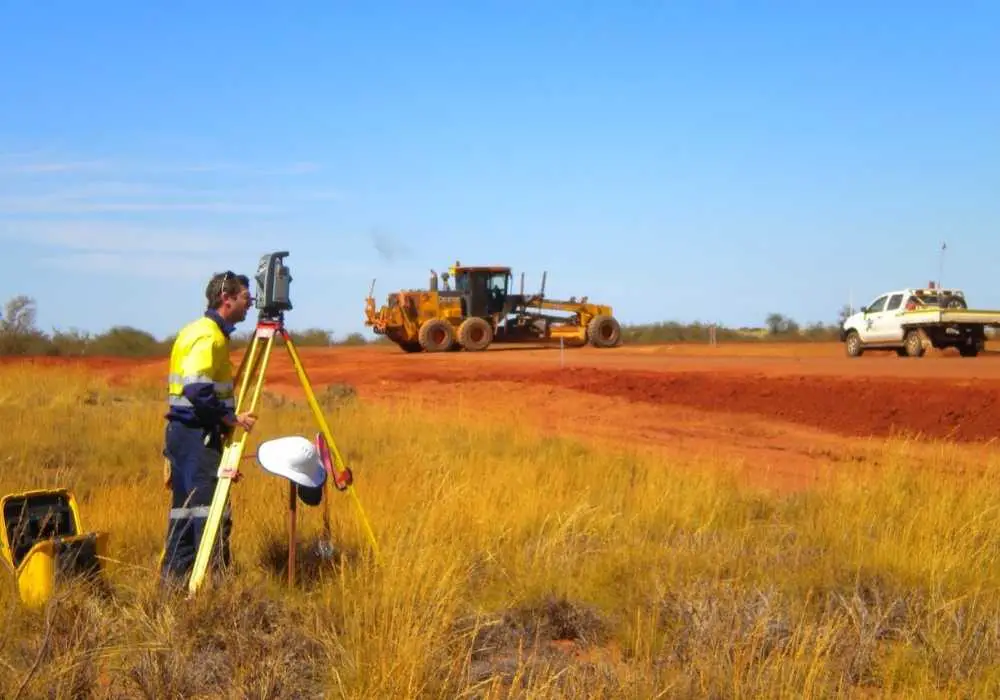A surveyor’s tripod is an important piece of equipment used in surveying. A tripod can support a large number of different surveying equipment including a total station, surveying prism, GNSS base station, optical & digital level and laser scanner.
Without a tripod, the surveyor wouldn’t be able to accurately and precisely measure with their surveying equipment, let alone have anything to attach their surveying equipment to. There are many different types and different applications for the surveyor’s tripods, read on below to learn more.
What Do Surveyors Tripods Do?
When a surveyor needs to use their surveying equipment such are a total station, surveying prism, GNSS base station, laser scanner or level (optical or digital), they use a tripod to support their equipment and to set it over a mark. Without a good quality and stable tripod, a surveyor would not be able to complete accurate and precise survey work.
What Are Surveying Tripods Used For
Tripods are used so a surveyor can attach any number of different surveying equipment to it (including either a total station, a GNSS receiver, surveying prism, a laser scanner or an optical or digital level). Surveying equipment is attached to a tripod by placing the equipment tribrach on top of the tripod head and screwing in the mounting screw into the tribrach.
Surveying equipment needs to be fixed in place, and not unstable for the surveyor to be able to measure accurate and precise data, that is why a good quality surveying tripod is important to a surveyor.
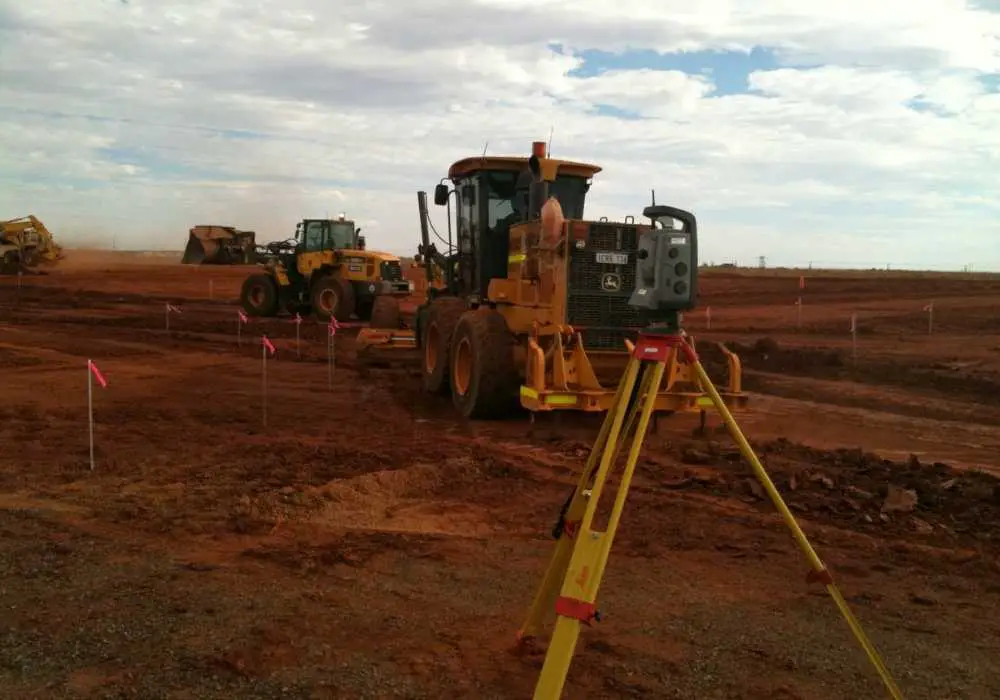
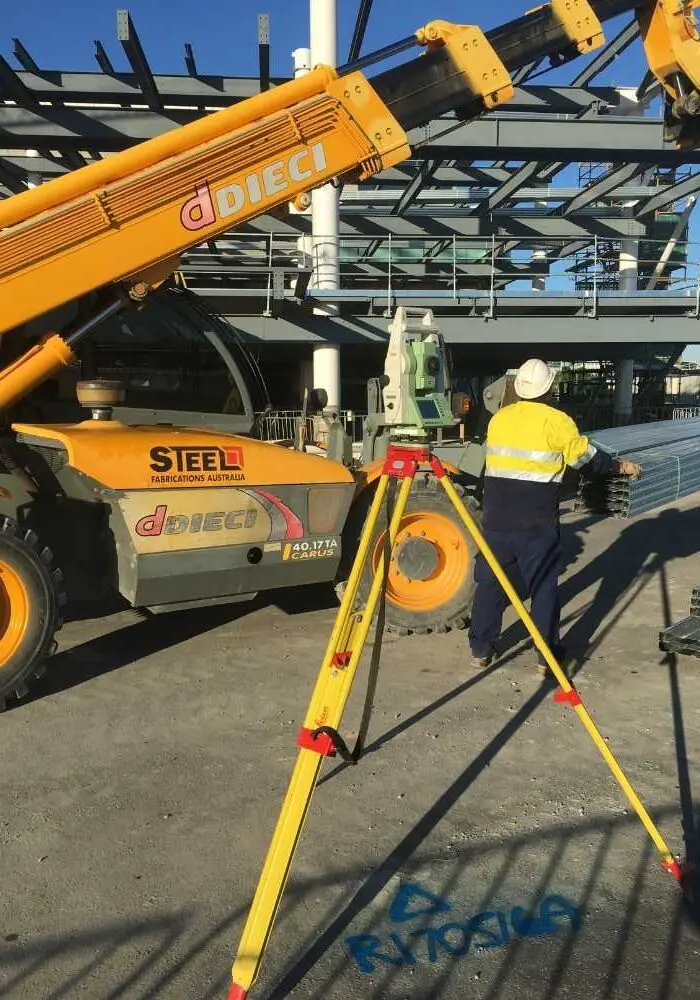
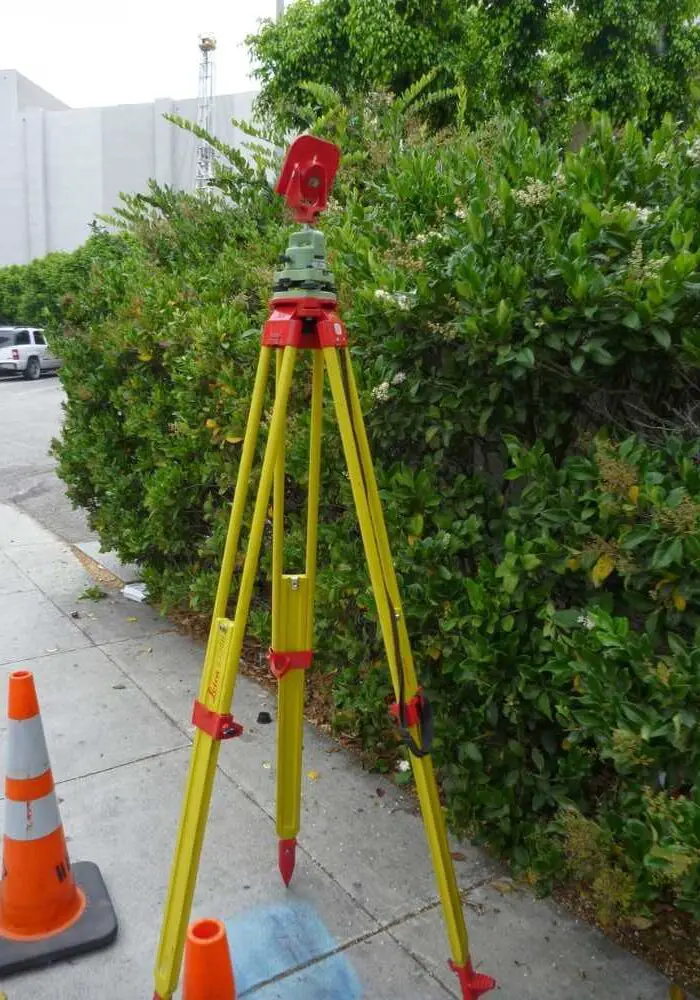
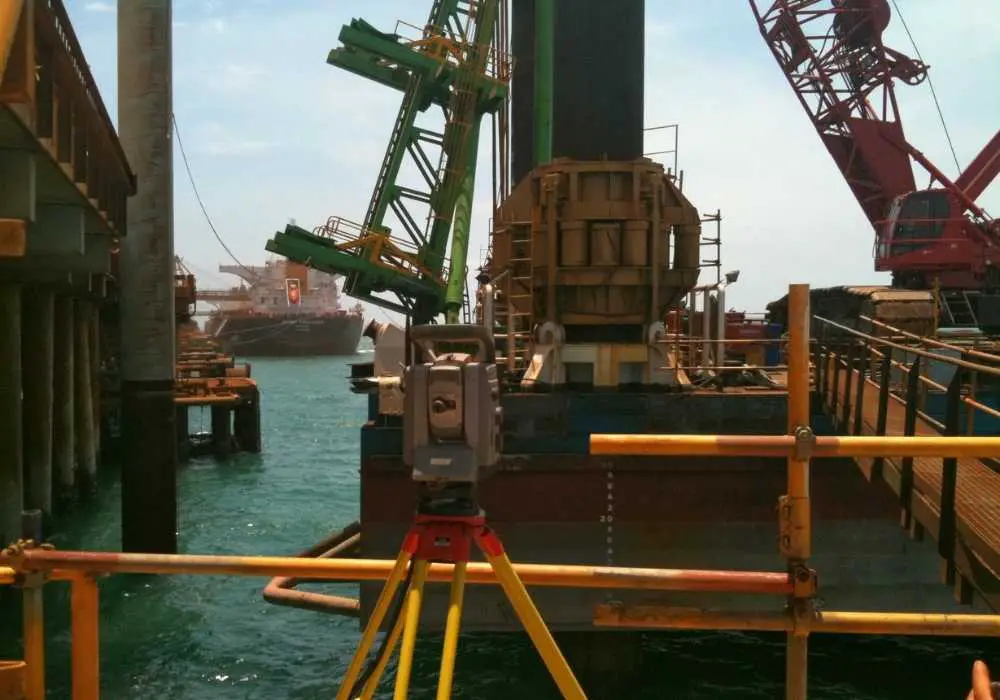
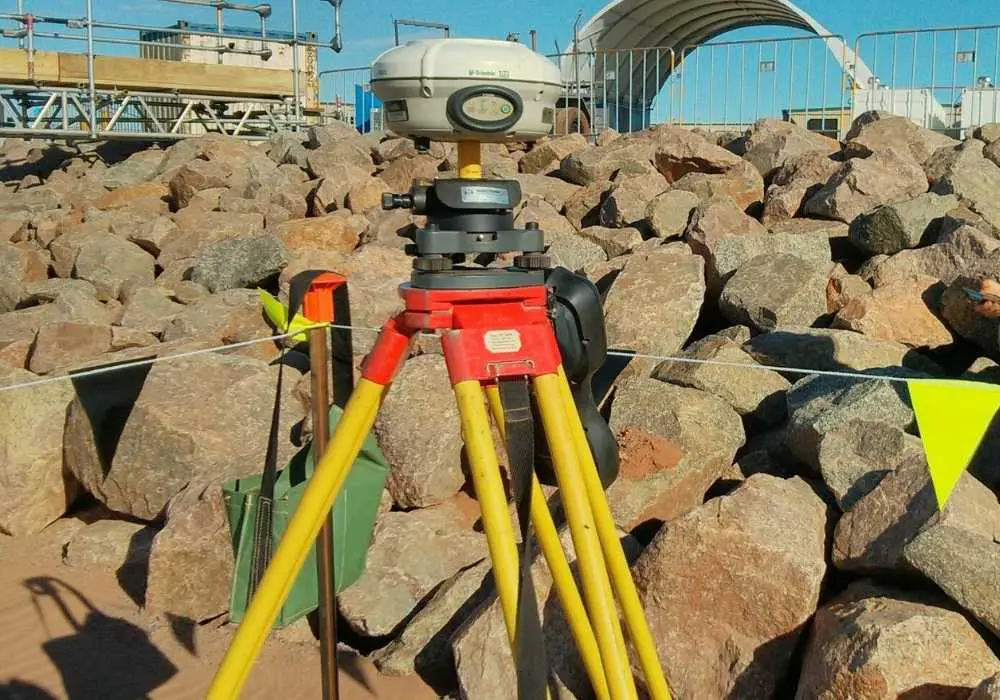
Different Types of Materials to Construct Surveying Tripods
Surveying tripods are made from a variety of different materials. Each tripod made with a different material has applications that they are both suitable for and not suitable for. I have listed out the materials that tripods are made out of below and given the ideal use, pros and cons for each type of material.
| Material | Ideal Use/Application | Pros | Cons |
|---|---|---|---|
| Aluminium tripod | Best used for applications that don’t require precise results. Levels or laser levels used in a construction setting. | Light and easy to carry around, aluminium won’t break but will bend. | Aluminium is affected by exposure to heat, if your instrument is set up in one spot for too long tripod legs could grow and shorten causing your instrument to go out of level. |
| Wooden tripod | Best used for any surveying application, from detail & construction surveys to GNSS static surveys and laser scan surveys. | Good quality wooden tripods are relatively light and sturdy that they can be used in any application. Wooden tripod legs are not susceptible to thermal expansion if not moved for a long period of time. | Wooden legs are suspectable of cracking if left in wet weather (wood expands when wet). If around vibrating rollers and other earth-moving equipment the total station may vibrate too much to be used. |
| Fibreglass tripod | Best used for laser scanning applications both indoor and outdoor. Very light and able to be moved easily. | Super lightweight, feet are rubber coated and won’t slip on tiles or concrete, ideal for scanning surveys indoors. | Not able to be used with any other type of surveying equipment other than a lightweight scanner, because they are too lightweight for conventional surveying applications. |
| Wood & fibreglass tripod | Best used for when you will be at one setup for a long time, like construction surveys, machine control surveys and static surveys. | Lower thermal expansion than the other types of tripods, and less suspectable to the vibration of earthmoving machines (because it is more sturdy and heavier) | Heavier to carry around. |
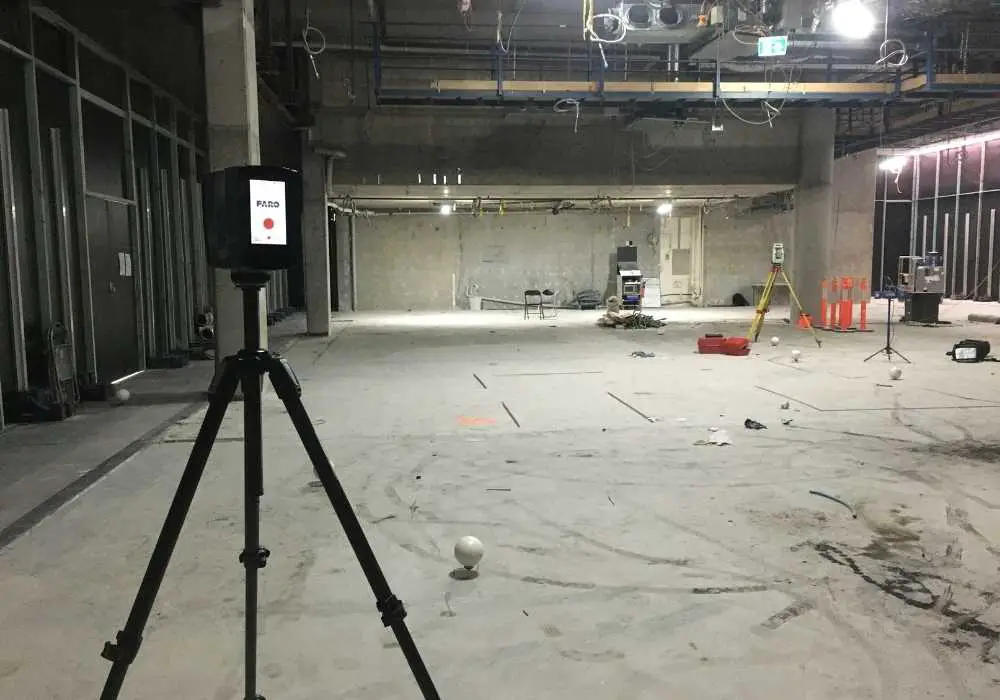
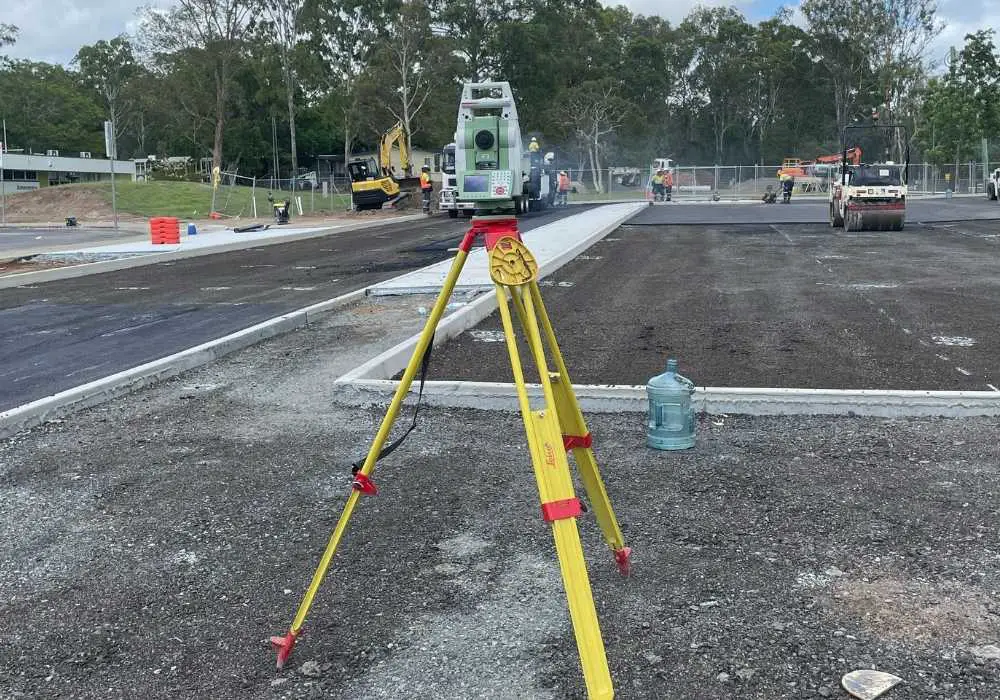
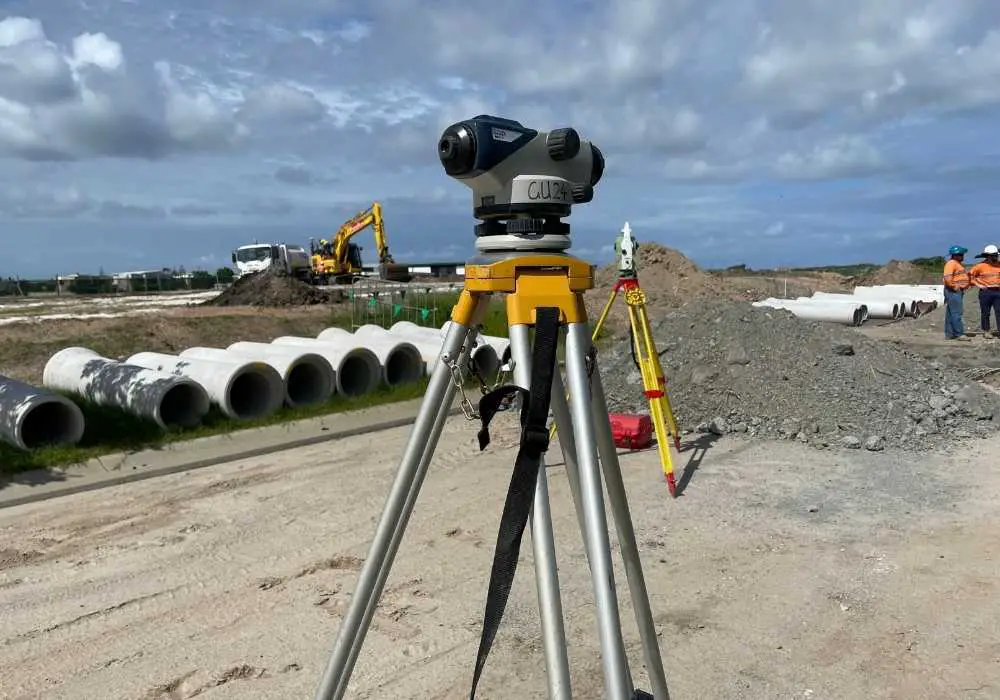
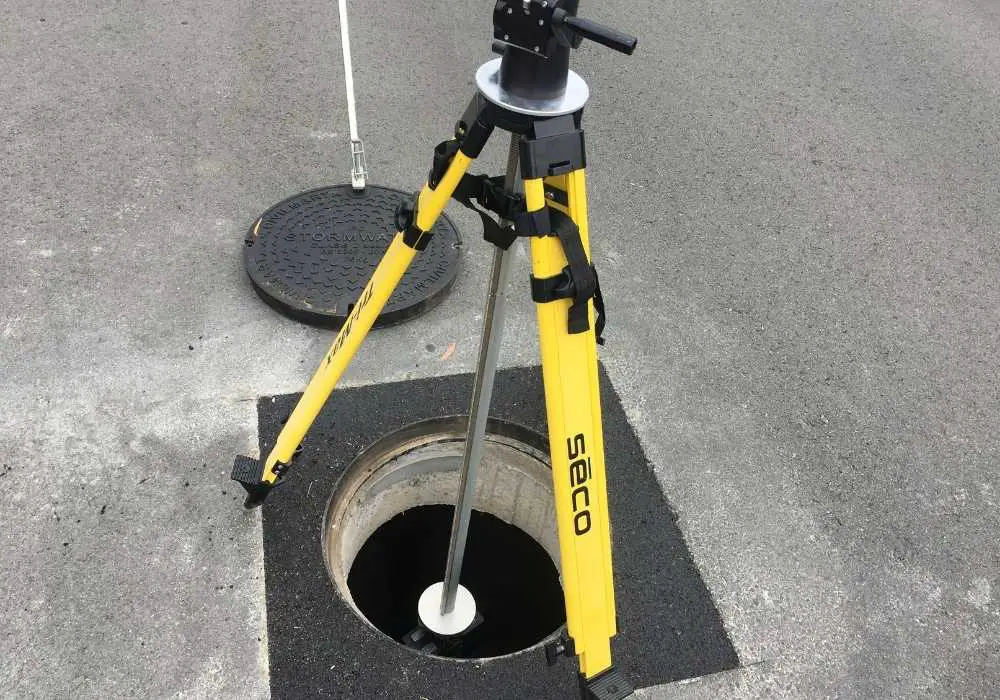
What Are Those Yellow Tripods Along Side a Road
If you have driven past a yellow tripod with a piece of equipment on top (that looks like a camera), you have most likely driven past a surveyor doing some surveying work.
The yellow tripod is used to hold the surveyor’s equipment and/or over a surveying mark.
Parts of A Surveyors Tripod
It is important that all parts of the tripod are in good condition and working correctly. If there are loose screws or parts this could affect the accuracy and precision of your survey.
Below is a list of all the main parts of a surveyor’s tripod.
Tripod Head
The tribrach that attaches to a surveying instrument sits on the tripod head. This is the most important part of a tripod because if the head gets damaged (dinted or scratched) the tribrach (therefore the instrument) won’t be able to sit flat on the tripod head, which may impact the instruments accuracy and precisions of readings.
To protect the head of a tripod each brand and type of tripod comes with a tripod headcover. I always used this to help protect my good quality Leica surveying tripods.
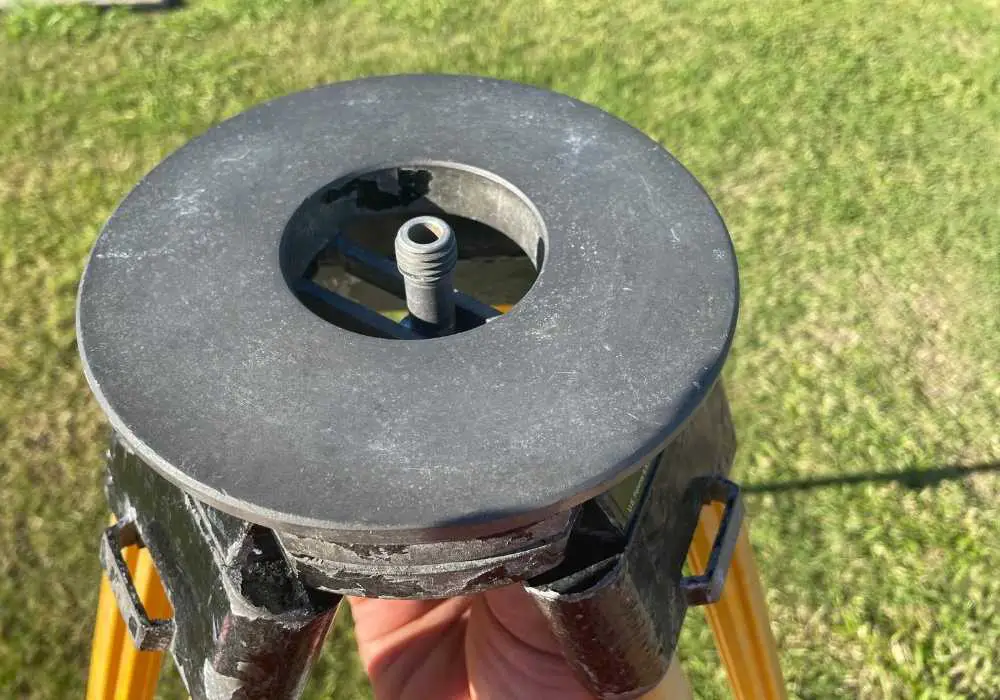
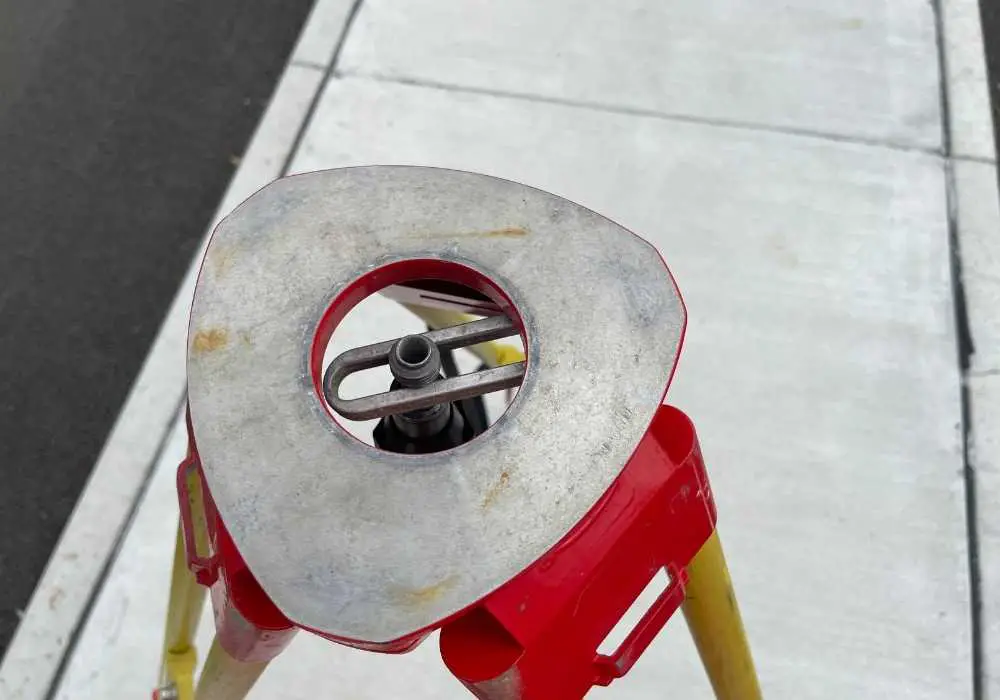
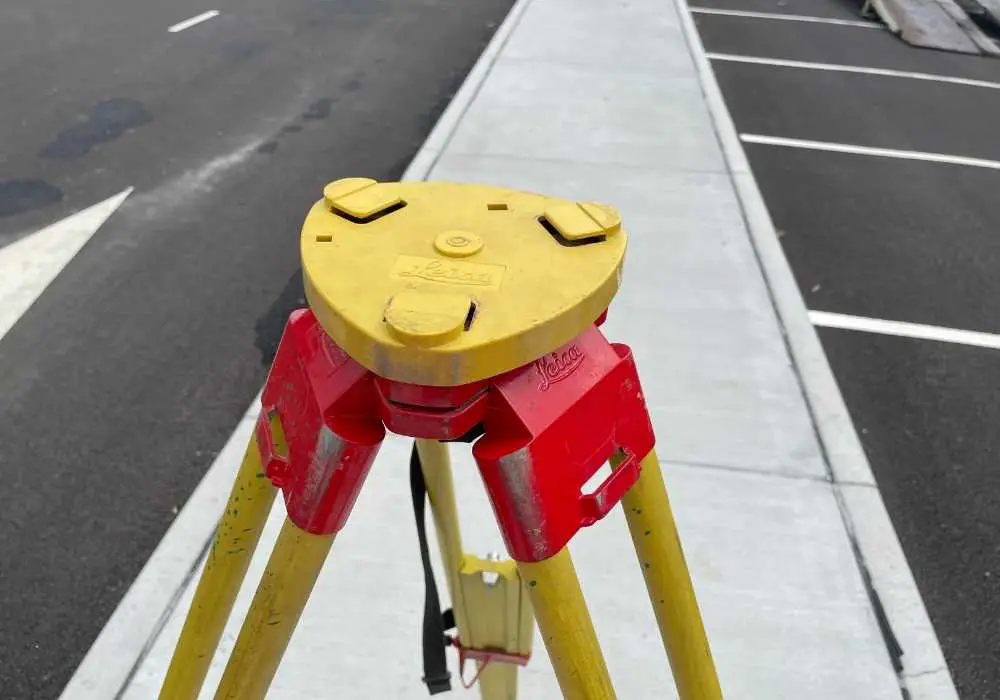
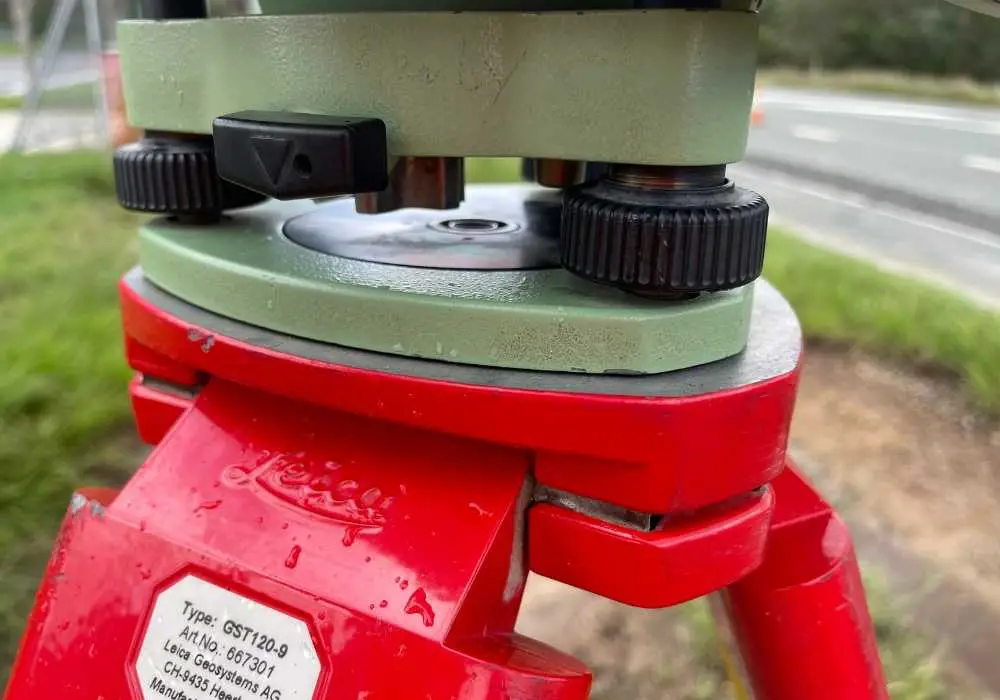
Tripod Mounting Screw
The mounting screw size is a 5/8″ thread size x 11 TPI (threads per inch) [source]. All known manufacturers and brands have adopted this thread size for all tripod mounting screws. This is beneficial as tripods are easily interchangeable between surveying equipment, and the mounting thread will fit the threaded hole in the tribrach for almost every other piece of equipment.
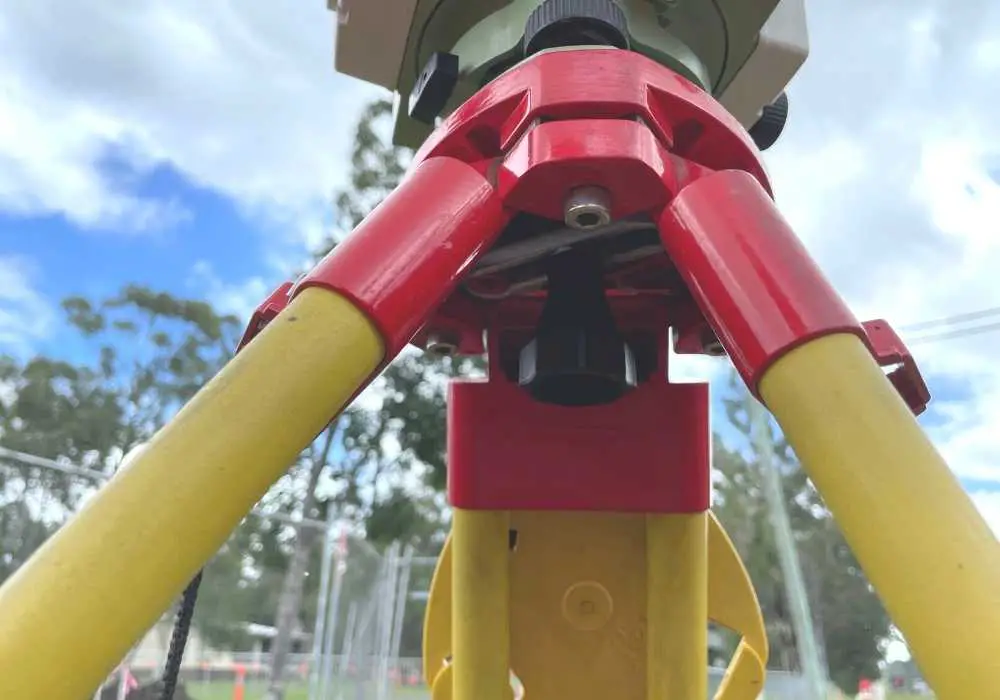

Tripod Legs
The surveyor’s tripod has three legs. The types of legs can vary between tripods with different applications. A list of applications and ideal tripod type is below:
| Short adjustable tripod legs | If you are needing a low setup, you might consider using a short leg tripod. |
| Tall adjustable tripod legs | If you need a tall setup because of obstructions on site at ground level, this might be an option for you. |
| Adjustable tripod legs | This is the most common type of tripod that you will see in use (pictured below). They will usually suit regular height persons, and the height of the equipment can be adjusted to overcome obstructions on site. |
| Fixed leg tripods | Used in precise levelling work. |

Tripod Leg Adjusting Screws
To adjust and help level the tripod, a surveyor will adjust each leg height differently. It is important that these don’t slip during the setup so that your survey data is not affected.
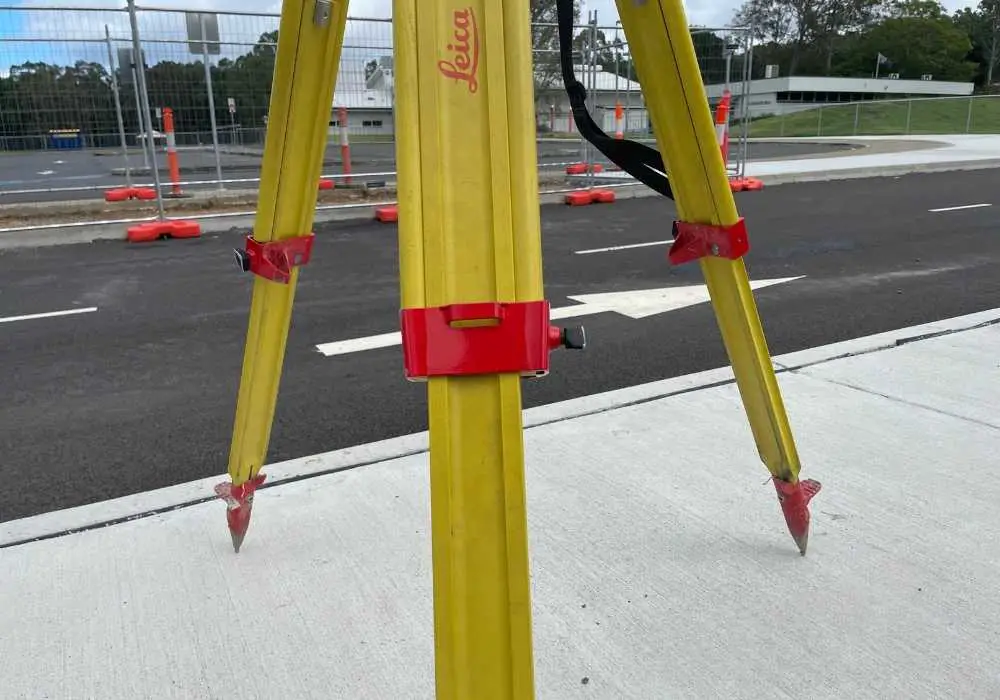
Tripod Feet
The tripod feet are what connects the surveying instrument to the ground. It is important that the feet and properly attached to the instrument and aren’t loose. The type of feet pictured below (steel feet with a tip at the end and a step to stamp the feet down to make your tripod stable) is what is common for all surveying tripods that are designed to be used outdoors.
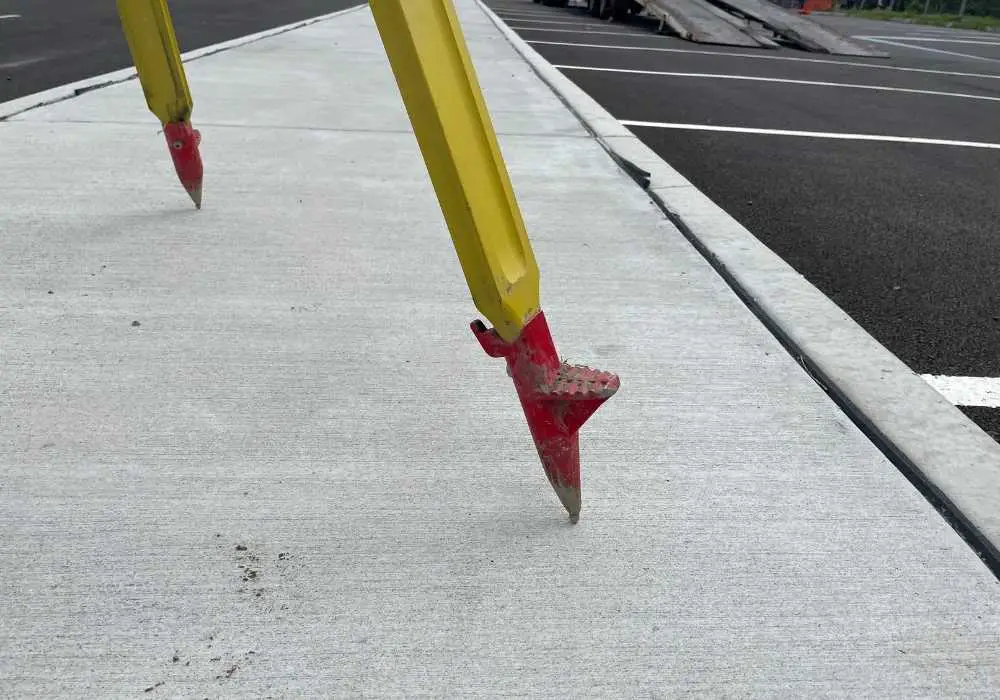
Can You Use a Surveyors Tripod for Photography
Some people have been able to convert and DIY a surveyor’s tripod to be able to mount a camera on top. Read blogs from both Large Format Photography and DIY Photography to see and learn how they did it.
Or you can just buy an adapter like this one if you don’t want to make your own.
Accessories for Tripods
There aren’t many accessories for tripods that you would need. Only a tripod head cap to protect the top, and also a tripod bag if you are going to be travelling with your tripods to sites.

